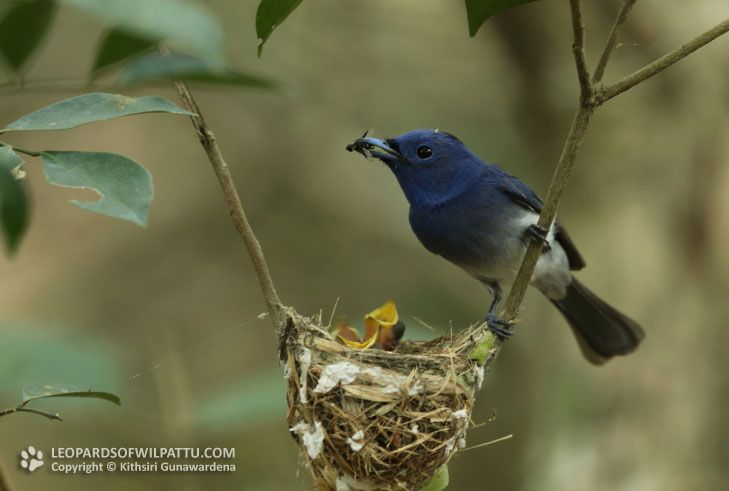
Birds ‹‹ Go Back
More than sixteen subspecies of this species are recognized in the world. They are found across tropical southern Asia, from India and Sri Lanka to Indonesia and Phillipines. The conservation status of the species under reference is regarded as Least Concerned (National Red List 2012).
Black-naped Monarch is a species protected under the Fauna and Flora Protection Ordinance as amended by Act No. 22 of 2009.
I have observed the subspecies that is found only in Sri Lanka H.a.ceylonensis, to be common in all the wet zone as well as the dry zone forests through out the country. In the hills it is common up to about 1000 meters. The highest altitude at which I have observed this species is at 1420 meters in the Knukles Forest Reserve above Bambarella. However, I have not observed this bird in the Jaffna Peninsular or in the Mannar Island. In January 2007 I found a nest of this species close to Maguru Wala in the Sinharaja Forest Reserve. It was built on a small sapling about three feet from the ground and the male was incubating.
In Wilpattu this species is quite common and can be heard as well as seen throughout the park. It is a cheerful little bird which is never still for long and goes about its daily duties with a sense of excitment . These birds are quite brave when it comes to mobbing predatory birds such as eagles and owls and are the first to approach such birds with their constant alarm calls. I once observed a male of this species darting at an immature Crested Hawk Eagle that flew on to a tree close to where I was parked, and briefly alighting on the back of the young eagle while making its frantic alarm calls until the eagle flew off across the Villu.
On the 23rd of June 2013 I observed a nest of a Black-naped Monarch close to the Panikkar Villu bungalow. Both the male and the female fed the three chicks in the nest with a continuous supply of insects. As I watched the male in the nest a Common Coucal was seen about 15 feet from the nest. The protective bird dashed towards the intruder and started to mob until the bigger bird moved out of sight.
In the evening around 5pm at Wilpattu if you happen to be at the edge of a villu or close to a water hole you can be certain of seeing one or two of these small sparrow sized birds plunging in to the water for their evening bath.



